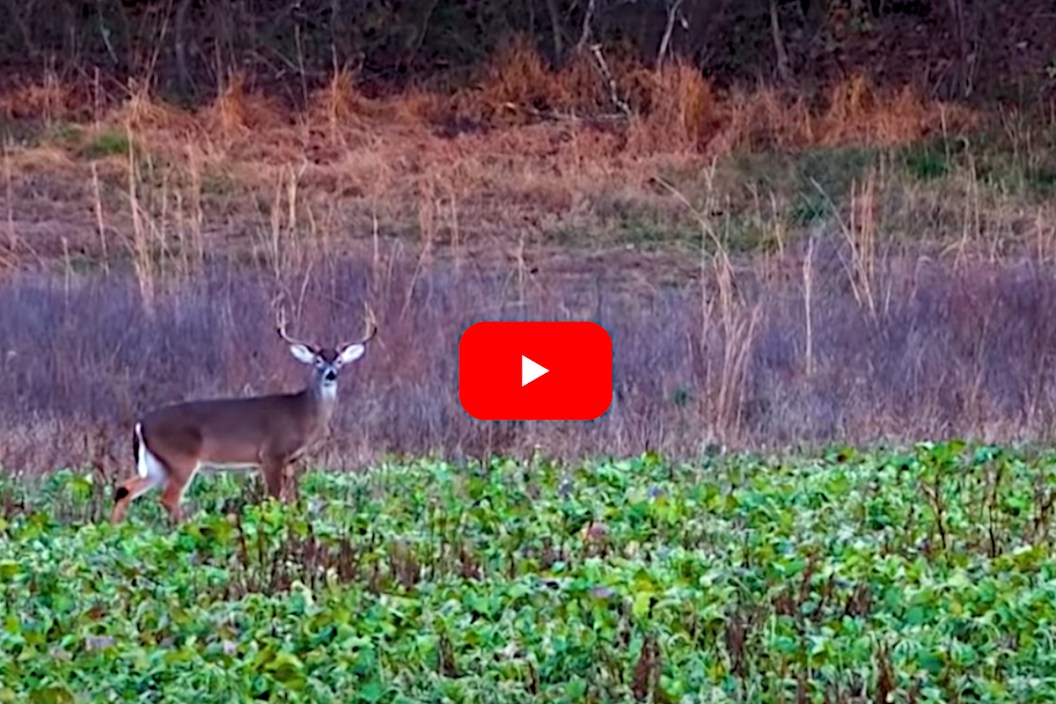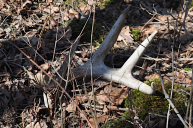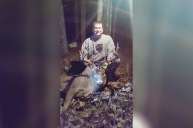This is what a severe brain abscess can do to a buck.
Here in North America, mule, white-tailed deer, moose, and elk are quite susceptible to natural mortality in many ways. Chronic wasting disease (CWD), EHD, natural predators. Nature is a harsh mistress when it comes to controlling the deer population, and there are tons of horrifying ways for an animal to die. One of the more disgusting and unfortunate ways is through brain abscesses.
Like it or not, these injuries can be common in whitetails due to sparring and fighting during the rut. All it takes is one mature buck poking an open wound into the skull of another to seal the other animal's fate. The crazy thing is, you might not know a deer is afflicted with cranial abscessation syndrome until he's already gone. Case in point, this hunt which was captured on video.
Watch as Lindsey Martin and her husband go after a beautiful, wide 8-pointer they have nicknamed "Frank." This buck looks perfectly normal when she shoots. However, upon walking up to the animal, they discover poor Frank has a real problem with a severe brain abscess. It's so bad, the injury causes the buck's antler to break off!
Poor Frank looked perfectly healthy until Lindsey lifted that buck's head to discover the horrors within his skull beneath the base of the antler. Quite a bit of skull came out with the pedicle when it severed, but it was that pus oozing out of the gaping hole that was the worst. Talk about disgusting. Frank may have been one of the lucky ones. Many adult male deer afflicted with cranial abscess show obvious signs like a loss of fear and emaciation.
The Pennsylvania Game Commission has an interesting page on their website all about intracranial abscessation in whitetail deer. It notes that this is a wildlife disease caused by a bacterial infection called arcanobacterium pyogenes. There are several different ways the bacteria can get in a deer's head. The most common way is through war wounds during the rut. All it takes is one tine puncturing a skull or the eye sockets to let the bacteria inside where it can then infect the brain and eventually kill the animal. However, a brain abscess is just one of the risks of being an antlered animal. The page also notes the deer can get infected during the summer months if an antler breaks while growing, during antler rubbing of velvet, or even through the antler pedicle after they've cast their antler at the end of the season.
In the end, we're glad Lindsey was able to harvest this deer. It's unlikely he would have survived another season with that wound. As the video suggests, use good judgement when deciding whether a deer is safe to eat. It probably wouldn't hurt to get a second opinion from a licensed butcher or your local DNR officer either if you shoot a deer suffering from an affliction like this.
For more outdoor content from Travis Smola, be sure to follow him on Twitter and check out his Geocaching and Outdoors with Travis YouTube channels.
NEXT: THE AXIS DEER AND HOW THEY'RE IMPACTING PARTS OF THE UNITED STATES





